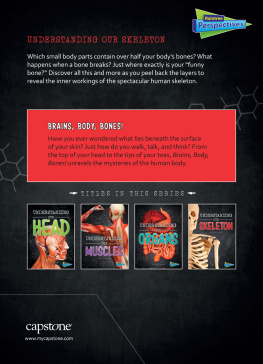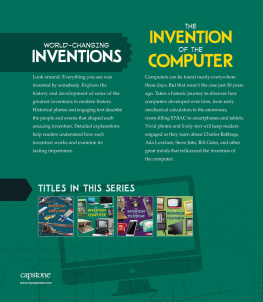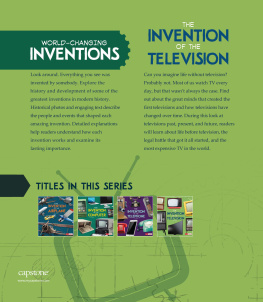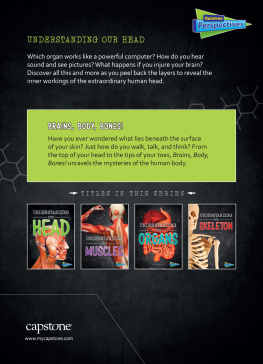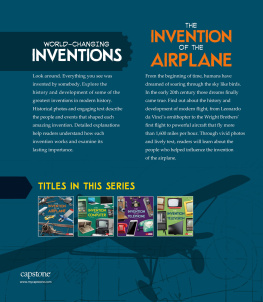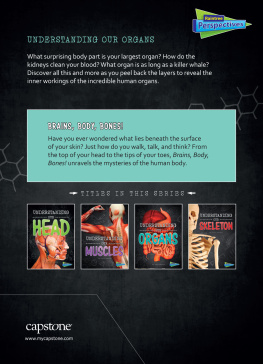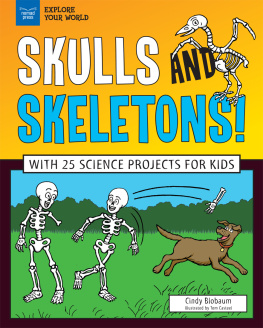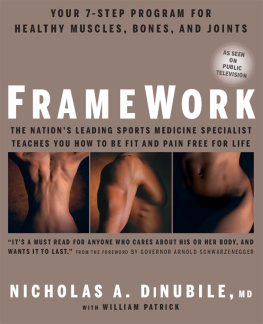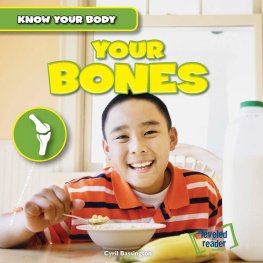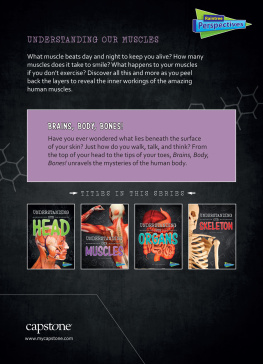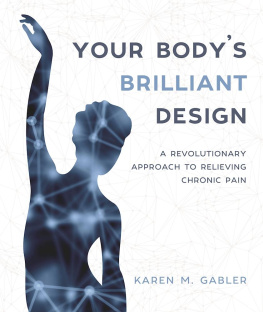Rub your nose, and gently wiggle it. Does it feel squishy at the end? Thats because there isnt a bone at the end of the nose. You can feel where your nose bone ends and your cartilage begins.
If you could look under all those connective tissues, you would see how your bones fit together. The place where two or more bones meet is called a joint. Without joints, you wouldnt be able to jump, run, or move at all. You can move because of your joints and the muscles that power them.
Protective cartilage.
The knee is the largest joint in the body and also the most complicated.
Body Talk
The hyoid is the only bone that does not connect to any other bones in the body, because it doesnt have any joints. This small horseshoe-shaped bone is instead anchored by muscles and ligaments at the base of the tongue. It helps you to move your tongue, swallow, and produce your voice.
A Joint Effort
The many joints of your skeleton allow you to move in different ways. Each type of joint is named for what it looks like or how it works.
.
Hinge joints move bones forward and backward only. These joints join two bones together like a door hinge. Your knees and elbows have hinge joints.
In a pivot joint, one ring-shaped bone turns around another cylinder-shaped bone. The head and neck form a pivot joint. This joint allows you to turn your head from side to side.
Move your body to see these different joints in action.
A Perfect Fit
Each bone in your body is shaped perfectly for the job it does. In fact, your skeleton is like a giant jigsaw puzzle of bones that fit together in amazing ways. Your spine is made of round bones that bend and twist at their joints. Arm and leg bones are rounded at the ends so they move smoothly against each other. Other bones, such as shoulder blades and hip bones, are large and flat. This shape allows them to attach firmly to the strong muscles that move your arms and legs.
BARE BONES
Once you get past muscles and connective tissues, youre left with the bare bones. Tap on the top of your head. Pretty solid, right? Skull bones form a helmet, which protects your brain. You cant move these bones. Of the 29 bones that make up your skull, only the lower jawbone moves.
Leading down from your skull, your .
The jawbone is the largest and strongest bone in the face.
Tiny but Mighty
Your skull contains the six smallest bones in the human body. Deep inside your ear are three tiny bones called the hammer, anvil, and stirrup. They are named for their shapes. These bones may be tiny, but they do a big job. They help carry sound waves to the brain.
The stirrup in the inner ear is the smallest bone in the body. It measures roughly 0.12 x 0.1 inch (3 x 2.5 millimeters).
See for Yourself
Take a deep breath. Did your ribs move? Your 24 ribs are connected by cartilage that keeps them in place to protect your lungs. But the cartilage also stretches so that your ribs can move just enough to allow your lungs to fill with air.
Arms Wide Open
Your arms connect to your skeleton at your shoulders. Scapulas, or shoulder blades, have round grooves where the upper arm bones fit. The clavicle, or collarbone, is shaped like a long S to hold your shoulder joints away from the trunk of your body. This allows you to move your arms in more ways.
The humerus is the long bone that runs from your shoulder to your elbow. Have you ever bumped that spot on your elbow that makes your arm feel numb? People call that hitting your funny bone. But really its a nerve in your elbow that causes the loss of feeling.
The two bones of your lower arm, the radius and ulna, do a cool trick. When your palm faces up, the bones run side by side. When your palm faces down, they form an X as one bone flips over the other. These bones make turning a doorknob possible.
Bones are various shapes and sizes to suit their jobs.
Body Talk
Your arm only has three bones, but your little wrist has eight. They allow you to move your wrist in all directions.
A Strong Support System
Every day your pelvis carries a lot of weight. Sitting, standing, even lying down, your pelvis helps to support you. Its wide, curved shape cradles your . This shape also allows you to walk on two legs.

